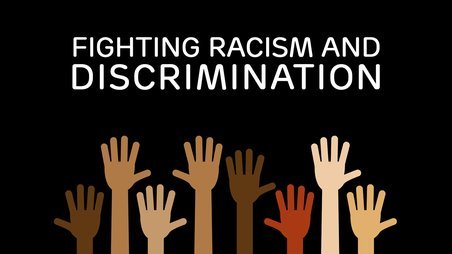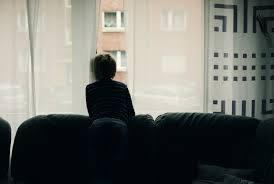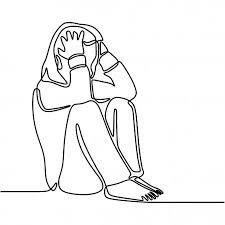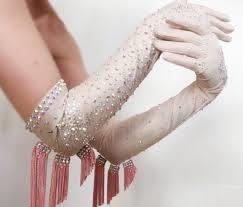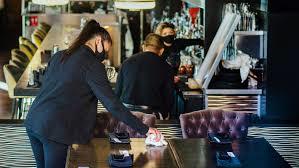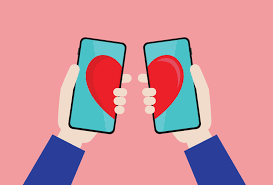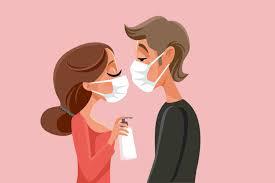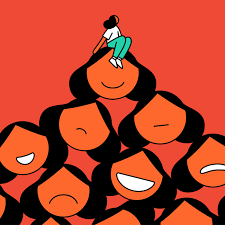Marcia Sirota's Blog, page 14
April 2, 2021
Expect Long-Term Mental Health Fallout From the Covid-19 Pandemic
 The race between variants and vaccines:
The race between variants and vaccines:We’re well over a year into the Covid-19 pandemic and it seems like it’s turned into a race between the aggressive new variants and the available vaccines.
Despite the roll-out of three different types of vaccines, the variants have been taking hold, making up at least half of all new cases in Ontario. The number of infections is topping 2000 on a daily basis and there are more ICU beds occupied right now than at any other time in the pandemic.
It’s obvious what this means in terms of the physical health of Ontarians, but we should also be keeping in mind the mental health toll of thirteen months of lock-down, and all the stresses and losses we’ve been experiencing because of the pandemic.
Recently, an article came out in Halifax Today, entitled, “some could experience lasting psychological consequences from COVID-19″, and I wanted to follow up on this idea, as it’s important to be equally aware of the mental health repercussions of the pandemic.
From my perspective as a psychiatrist, there are specific groups of people who are most at risk for long-term mental health consequences, even well after the pandemic is over.
The six groups who are the most vulnerable to lasting mental health effects from the pandemic:
1. Those who have preexisting mental health issues. These are the people who were struggling with anxiety, depression, OCD, Bipolar Disorder, and other forms of mental illness even before the pandemic began. Stress will always exacerbate preexisting mental health symptoms, and the pandemic has been a severe and ongoing stressor.
2. People who already had maladaptive coping strategies. These are the individuals who would turn to drinking, drugs, over-eating or binge-purging, gambling, shopping, on-line addictions or other compulsive behaviours when under stress.
These maladaptive coping strategies are ineffective and often make things worse, so thirteen months of employing these strategies are likely to have a negative impact on someone’s mental well-being.
Another group of people with maladaptive coping strategies are those who express their emotions through their interpersonal interactions.
There are two types of dysfunctional coping strategy: social withdrawal, and becoming more irritable or aggressive. The former group will self-isolate and miss out on necessary emotional support, whereas the latter group could incur serious long-term consequences for having engaged in antisocial, abusive behaviour.
3. People who lacked social support prior to the pandemic. There is a large group of people across Ontario who were socially isolated well before the pandemic began.
These are individuals who struggle to connect with others at the best of times and now, with so many social restrictions, they’re more isolated than ever. These individuals are likely to come out of the pandemic in much worse emotional shape than before.
4. The Covid-19 long-haulers. Like anyone with a chronic, unpredictable, and frightening illness, the Covid long-haulers are beset by a number of troubling symptoms which interfere with their ability to get on with their lives.
We can all appreciate the physical impact of being a long-hauler, but this type of illness has lasting mental health consequences as well.
5. Those whose lives were significantly disrupted by the pandemic. This group includes those people who had loved ones who became seriously ill or who died of Covid-19.
It also includes those who lost their jobs or their small businesses, and anyone who was put under significant financial strain and who lost savings or even their homes.
All of these individuals are at high risk of having lasting mental health repercussions, long after the pandemic has resolved.
6. Front-line health-care workers: Many of these individuals are exhausted and demoralized. They’ve been going at it non-stop, often in the absence of adequate PPE. They’ve seen so much suffering and loss, while working round-the clock and often having to isolate from their family members.
The toll that this has taken is not just physical but emotional. These people need all the support they can get, but often, those in the caring professions don’t know how to ask for help for themselves.
 How to assist:
How to assist:So, what can we do to make things better for those who are suffering? The first thing to do is to pay attention to the people in our lives and keep an eye out for anyone who might be at risk.
Specific individuals who should be paying close attention are front-facing professionals such as teachers, bosses, doctors, clergy and mental health practitioners. All of these individuals can make a point of observing for signs of trouble.
Front-facing people and anyone, really, can look for signs of distress, which is not easy to do these days due to social isolation and occupancy limits in places of worship, for example.
But still, it’s up to all of us to keep an eye out for those who are struggling, so that we might get them the help and support they need, sooner rather than later.
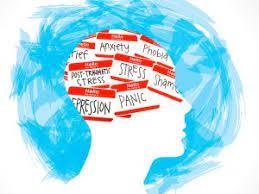 The five signs that indicate someone is struggling with their mental health:
The five signs that indicate someone is struggling with their mental health:1. Increased distractability: the person seems like a “space cadet” and is forgetful, preoccupied and/or unfocused. This is a red flag indicating a problem, so rather than criticize the other person for being an airhead, find out what’s going on with their mental health.
2. Presenteeism or absenteeism at work: Presenteeism is someone showing up at work but getting very little done. Their body is in the chair but their mind is elsewhere. In terms of absenteeism, when a formerly reliable employee is coming in late or calling in sick a lot, it could be a sign of mental health problems.
3. Social withdrawal or relationship conflicts: When someone who previously had no social difficulties is suddenly irritable, hostile, paranoid or socially avoidant, this is a strong sign that they are struggling with their mental health.
4. Tearful episodes or panic attacks: If someone suddenly starts having crying spells or going into a panic it means that they are not doing well in their mental health.
5. Poor grooming or self-care: If a person shows up at work or in an online meeting with unwashed hair, dirty fingernails or looking unkempt, it means that they’re not attending to their personal hygiene, and this is often an indicator of poor mental health.
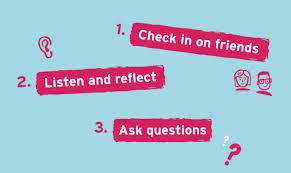 Take action:
Take action:The next thing to do is take action. You can reach out and inquire how someone is doing. You can spend socially distanced time with another person, giving them support, validation and encouragement.
You can encourage this person to seek out counseling, coaching or therapy, or to connect with their family doctor or a psychiatrist. These professionals can provide a lot of support to the person who is struggling.
Resources:The phone number for the Distress Centres of Greater Toronto is: 416-408-4357. The Canadian Mental Health Association — CMHA — toll-free number is 1-800-875-6213, or you could go online to info(@)Ontario.cmha.ca
___
Sign up for my free biweekly wellness newsletter here for my series on Moving into Spring with Good Self-Care, where you’ll learn simple tips for taking the best care of yourself and your loved ones this winter season.
And tune in to my ongoing YouTube video series on Coping With Covid.
March 30, 2021
Expect a mental health roller-coaster ride in the wake of holiday gatherings
This is a strange and contradictory time in the course of the pandemic. On the one hand, restrictions are being lifted in Ontario; on the other hand, the number of cases is steadily rising and all signs point to an even more lethal third wave.
Despite the dire warnings by doctors and public health officials, the provincial government is planning to increase the number of people who can gather together and they’ll be opening up small businesses like hair and manicure salons by mid-April.
A lot of people are already booking their haircuts and mani-pedis, thinking that if the government says it’s okay to do it, they’re all in.
Confirmation bias:It brings to mind the notion of confirmation bias, which is the tendency of people to ignore information that disagrees with their point of view and to interpret information in a way that confirms their beliefs.
If the public health department is warning of a third wave and more deaths but the government is saying, “let’s open things up,” those with confirmation bias are going to hear only the optimistic messages of the government and they’ll ignore or minimize the warnings of the medical field.
And that is a dangerous way of thinking as the holiday season is upon us. Passover begins the evening of March 27th. Good Friday is April 2nd. March break in Ontario has been delayed and is scheduled for mid-April.
The new variants of concern:If people decide that it’s safe to get together with their families for the holidays, we could see a frightening spike in hospital admissions a few weeks after the holiday season has begun.
The issue is that with the new variants, things really have changed. Young people are at a much greater risk now of becoming seriously ill and even dying. The age group most affected by Covid-19 these days is the 20-39-year-olds.
We can tell ourselves that the risk of catching Covid is low and that we can get together with our loved ones over the holidays, but in fact, the new variants of concern are making up more than 40% of new cases in Ontario and people infected with the variant have a 60% higher risk of death than from the original strain of Covid.
It’s unfortunate that we’re getting mixed messages from those responsible. The government of Ontario is saying that we can let down our guard, but our public health officials and hospital-based physicians are saying that we should be even more careful than before as the new variants are much more infectious than the original Covid strain.
There’s some good news, but…The only good news is that the vaccine roll-out is proceeding. But getting a first shot does not mean that we should throw caution to the wind. We still need to be careful and think about who we come into contact with.
I personally will not be socializing with anyone until I’ve had my second dose of the vaccine and I’m assured that all the people I’m meeting up with have both of their doses as well.
The upcoming holiday season could be highly detrimental to our mental health, because it can take us on a nasty roller-coaster ride. The high point will be our joy, based on our false belief that it’s now safe to gather with our out-of-household loved ones. The low point will be our devastation when people start to get sick.
Is it worth it to celebrate with people outside of our own household, right now? I don’t think so.
With the more deadly, more contagious variants making up close to half of the new cases these days, and young people being that much more vulnerable to serious illness, it’s not worth the risk.
Rather than setting yourself up for a mental health roller-coaster, it’s time to practice some good mental health self-care.
Here are my four tips for preventing a mental health roller-coaster this holiday season:1. Let go of magical thinking: You need to focus on the facts, not on what you wish were true. That’s what will keep you safe, both physically and in terms of your mental health.
2. Be patient, not impulsive: You need to think before you act about the potential consequences – to yourself and others – of your actions.
3. Stay informed: You need to base your choices on the facts; not on how you wish things would be, or on the things said by people who confirm your point of view
4. Tolerate your disappointment through self-compassion: You need to remind yourself that disappointment is not disaster, and that although it’s tough, you’re strong enough to get through it. Try to self-soothe with positive self-talk and remember that we’re almost at the end of this.
If you want to avoid a mental health roller-coaster, follow the four points above. You’ll stay safe, mentally and physically and you’ll be able to make the most of things when the pandemic is finally over.
__
Sign up for my free biweekly wellness newsletter here for my series on Moving into Spring with Good Self-Care, where you’ll learn simple tips for taking the best care of yourself and your loved ones this winter season.
And tune in to my ongoing YouTube video series on Coping With Covid.
March 16, 2021
After the Final Rose Goes Deep into Racism, Betrayal and Deal-breakers in Love
 A shocking “After the Final Rose:”
A shocking “After the Final Rose:”Anyone who is a fan of the Bachelor franchise and who watched After the Final Rose on Monday, March 15th had the opportunity to witness a very different scenario than the usual light and airy Bachelor fare.
Watching both Rachel K. and Matt J. speaking to the excellent guest host, Emmanuel Acho, you couldn’t help but notice the waves of emotional devastation emanating from the once-happy couple.
Rachel couldn’t stop crying as she shot furtive glances over at her former beloved, and Matt – almost never at a loss for words – was often utterly speechless. He sat there, staring into space, his eyes deadened from the overwhelming grief and pain.
Matt James – the first Black Bachelor:These are difficult times under the best of circumstances, with the pandemic still roaring and the losses piling up. Issues of racism and the fight for equity and justice are justifiably front and center in the media. And in the middle of it all, the Bachelor TV franchise decided to have the first man of colour as its star this season.
In Monday’s show, Matt told Emmanuel that he had felt considerable pressure being the first Black Bachelor, because it wasn’t going to be just about him finding love – it was going to be about him representing all Black men in America to the show’s viewers.
He admitted that it was a lot for him, but then he said that it had been worth it for the opportunity to meet so many amazing women and to potentially find love. So, when he did find love with Rachel, he felt that he’d made the right choice to go on the show. Until, of course, when the news broke about Rachel’s past activities.
Watching this poised young woman on the March 15th show, I have to give Rachel credit. She admitted how ignorant she had been and how she had never taken a moment to think about what she had been doing or the effect her behaviour would have on racialized communities. She openly stated, with all of America watching, that she should have been more a lot more thoughtful, back in 2018.
Rachel was ignorant but not malicious:When Emmanuel mentioned the photos of her attending an Antebellum-themed plantation party in 2018 and asked her if the thought of these photos surfacing during the taping of the show had kept her up at night, worrying, she admitted that she hadn’t thought about the photos at all – such was her ignorance.
She owned up to everything she had done without excuses or defensiveness. It seemed like she had entered into the process with ignorance and insensitivity but she had come out with awareness accountability. This was impressive, but even so, Matt couldn’t get past her actions.
Judging from the shell-shocked expression on his face, Matt was destroyed by the betrayal. On the show, he told Emmanuel that aside from Rachel’s actions in 2018, her initial lack of awareness about how her actions would have affected people of colour was what had made him feel that she couldn’t understand his experience as a Black man in America. And clearly, he couldn’t live with that.
This is a true tragedy, born of America’s willful ignorance about the impact of systemic racism on communities, individuals and couples. It also comes from an equally stubborn unwillingness on the part of many Americans to learn about their own implicit bias.
Rachel was just one more young person who happened to be clueless about what racism – in general, and specific to her own actions – really entails.
How not to be a racist:It’s not enough to have BIPOC friends or even a BIPOC love interest. In order to not be racist, you have to understand the implications of your White privilege in your day-to-day life and you have to comprehend how your actions might affect those in racialized communities. Most importantly, your behavior can’t just be not hurtful; it has to be actively supportive to these communities.
To give Rachel credit, when asked by Emmanuel what she was doing to change, she said that she is doing a lot of learning but also, she admitted that, no matter what she learns, it won’t count unless her actions begin to change.
My heart broke for both of these young people. It seems like Rachel truly loves Matt and that she was still hoping for a reconciliation. When she reached out to take his hand in a difficult moment but then within seconds, he pulled his hand away, it was a cringe-worthy moment not just for them but for everyone watching.
Everyone messes up:We all make mistakes. We can all be insensitive, selfish, petty, or ignorant at times. After all, we’re human. It’s unfortunate that Rachel’s ignorance about racism coincided with her falling in love with a Black man on national TV. The world got to watch the consequences of her mistakes while her heart broke — in public — into a million pieces.
And poor Matt, whose haggard face showed every last bit of his suffering – he confessed to Emmanuel that he “hadn’t signed up for any of this.” He’d gone into the process to find love for the first time and he thought that he had found it – only to have the rug pulled out from under him. He was so devastated by Rachel’s actions that he simply couldn’t get past them.
We can’t judge Matt for his choices. He is a Black man in America whose new White girlfriend was just shown to have a history of racially insensitive behaviour, and he couldn’t deal with his prospective life partner not understanding what this must feel like to him. I imagine it was like adding insult to injury, and anyway, we can’t begrudge him his authentic emotional experience.
Matt might still love Rachel but even so, sometimes a romantic partner can do something that’s a deal-breaker and we just can’t get over it, no matter how hard we might try.
In my psychotherapy practice I always tell my patients that in love, there are two lists we need to honour: the things we can’t live without, and the things we absolutely can’t tolerate. I tell them that everyone’s heart is different, but everyone is entitled to whatever happens to be on their lists.
If Rachel’s betrayal is on Matt’s list of deal-breakers, no-one should judge him for it. It’s simply what’s in his heart and like anyone else, he’s entitled to his feelings.
Sometimes, in life, we get lucky and we can mess up royally with minimal consequences. Other times, we pay a steep price. We can never know how things will go because it’s never up to us. in the case of Rachel and Matt, her ignorance and insensitivity happened to have devastating consequences for two people, and my heart goes out to both of them.
__
Sign up for my free biweekly wellness newsletter here for my series on Moving into Winter with Good Self-Care, where you’ll learn simple tips for taking the best care of yourself and your loved ones this winter season.
And tune in to my ongoing YouTube video series on Coping With Covid.
March 5, 2021
Five Tips to Help You Recover From Your Worst Year, Ever
It’s the one-year anniversary of the Covid-19 pandemic. In mid-March 2020, the entire world was locked down for the first wave, and since then, the pain, loss and stress have been unimaginable. As a result, mental health everywhere is at an all-time low.
Here in Ontario, people have lost their jobs, their businesses and their homes. They’ve lost loved ones and they themselves have been sick, with many continuing to have lingering symptoms leaving them chronically unwell and stressed to the max.
Drug and alcohol abuse are at an all-time high, as people attempt to cope with the stress in dysfunctional ways. Even more concerning, spousal and child abuse are sky-rocketing as families are isolated together for months on end with frustrations mounting and tempers raging.
There are five reasons why mental health in North America is at an all-time low:
1. Social isolation: We’re used to being with a wide variety of people and either we’ve been completely alone or we’re seeing only a small handful of people. We deeply crave human contact and a richer variety of interactions.
2. Loss: We’ve given up so much in the past year, including our freedom to move around, our social, cultural and recreational activities, and for many of us, our financial security. Most importantly, we’ve lost our ordinary routines and any sense of normalcy. We’ve even coined a term, the “new normal,” to reflect how much things have changed.
3. Social overload: For those of us with a partner, a family, or a room-mate, we’ve been confined in the same space with the same people for an entire year. We miss the company of everyone else and we’re bored with seeing the same faces, every day. Some of us are becoming more impatient and irritable toward the people who we live with.
4. Lack of distraction from the self: Many of us engage in a lot of activities to avoid facing our thoughts and feelings. We do a lot of socializing, exercising and even over-working to distance ourselves from what’s going on in our hearts and minds. Suddenly, with the pandemic, we have all this quiet time for reflection and contemplation and it’s been making some of us extremely uncomfortable.
5. Fear and Lack of Control: The pandemic has brought home how random and unpredictable life can be. We North Americans had become spoiled and complacent, expecting our lives to always go along smoothly with a minimum of disruption. With Covid, we’re now having to confront feelings of uncertainty, vulnerability and helplessness.
Fortunately, there are five simple strategies for coping with each of these challenges.
1. To deal with social isolation, learn to tolerate being alone:
a)Enjoy your own company: you need to come to terms with your own aloneness and see it as not such a bad thing. You need to learn how to have fun on your own, developing new pastimes and activities that you can enjoy all by yourself.
b)Creatively reach out: just because you’re more socially distanced it doesn’t mean that you can’t connect with people. You have to be more creative and thoughtful about how you do it, but you can maintain and even develop your relationships if you put a little more effort into it – and some people are finding that their relationships are deeper and more fulfilling these days.
2. To deal with loss, practice my simple, three-step coping strategy:a)Face your loss: the first step is to acknowledge the significance of your loss and the pain it has caused you, and then to have real compassion for yourself and what you’ve been through.
b)Grieve the loss: the second step is to actively grieve and mourn what you’ve lost, whether it was a job, a career, a loved one or your old, pre-Covid sense of identity. It requires shedding real tears, getting right down to the depths of your pain, and then releasing all the bad feelings.
c)Let it go: the third step is the natural outgrowth of steps one and two. Once you’ve faced and grieved your loss or losses, you start to feel a sense of relief and an easing of your emotional strain. You feel a sense of lightness and a renewed sense of hope and optimism. You never forget what you’ve lost but you no longer feel as burdened by the pain.
3. To combat social overload, work on being happier together:
a)Don’t sweat the small stuff: you need to learn how to put things into perspective and not get bent out of shape over little things that aren’t important. And, when the big things come up, you’ll be less irritated, in general, and more able to deal with them in a reasonable and respectful manner.
b)Carve out alone time: just because you share the same space, it doesn’t mean that you have to be on top of each-other all the time. find separate places in your home to go so that you all have some alone-time. if your place is too small for that, make sure to get out and go for a walk every day, just to have that time for yourself and encourage the people you live with to get out and do the same, so that they get a break, and that you can be at home on your own for a while. This will reduce the level of tension in the home, considerably.
4. To deal with the lack of distractions, practice introspection with self-compassion:
Many people avoid confronting their feelings and thoughts because they’re afraid of all the self-judgment that might accompany introspection. If you can work on silencing the inner critic and observing your thoughts, feelings and behaviours with true self-compassion and acceptance, it will be a lot less scary and more fruitful to spend that time in quiet contemplation.
Instead of distracting yourself with food, alcohol, drugs or gaming you get to know yourself. The pay-off – aside from avoiding self-destructive behaviours – is that increased self-awareness leads to more happiness, fulfillment and success.
5. To cope with feeling scared and out of control, practice self-comfort and surrender:
a)Try self-soothing: this consists of positive self-talk that is soothing, reassuring and calming to yourself – just as you would do for your own child – when you’re feeling scared, insecure or overwhelmed. And it really works!
b)Give up control and embrace conscious choice: rigidly holding on to the illusion of control only makes us feel more overwhelmed and miserable. Surrendering to the reality of no control will empower us to make informed, creative choices, and this will decrease our stress and significantly improve our happiness and success.
If you practice these five tips, not only will you recover from the past year, but you’ll be on your way to not just surviving but thriving, in the months and years to come.
__
Sign up for my free biweekly wellness newsletter here for my series on Moving into Winter with Good Self-Care, where you’ll learn simple tips for taking the best care of yourself and your loved ones this winter season.
And tune in to my ongoing YouTube video series on Coping With Covid.
February 28, 2021
Maskual Harassment: The New Form of Sexual Abuse Created by the Pandemic
I just learned about a new form of sexual harassment going on these days. It’s being called “maskual harassment,” and I’ve got to say, it fills me with all sorts of feelings – none of them positive.
This type of harassment happens when a male restaurant diner, after he’s finished his meal, says to his female server something along the lines of “show me what’s under the mask if you want your tip.” If the server refuses to show him her face, the customer skimps on the tip. The NY Times even wrote about it recently.
Fascination with what’s underneath:This is problematic in so many ways that I had to write about it. The first thing that came to mind is the historical context for this type of harassment. Over the centuries, men have been fascinated by what is underneath a woman’s clothing and over the centuries, many men have tried to get a peek at it.
Whether it’s going to burlesque or striptease shows, or going to even greater – and often illegal or immoral – lengths to see what’s under a woman’s garments, men have been attempting to get past those boundaries for the longest time.
The problem with maskual harassment is not that the man is demanding to see a body part that’s supposed to remain hidden – the face is not usually a sexualized body part. Mask harassment is about the way the man starts to sexualize and objectify the server’s face when she’s just trying to make an honest living.
Some might argue that asking to see what’s under the mask is not the same as demanding, for example, that a woman should remove her shirt, but actually it’s pretty darned similar, and I’ll explain why.
In both cases, a boundary violation is taking place.
It’s less about whether or not the covered body part is meant to stay covered and more about the fact that the man is demanding to see it, against the woman’s will. Any time a man demands something related to a woman’s body that’s against her will, it’s abuse, and it’s wrong.
Power dynamics in abuse:As soon as someone in a position of greater power demands that someone in a position of lesser power show them what’s hidden beneath an article of clothing, an abusive sexual dynamic is established.
Of course, with body parts that are supposed to be covered in public, it would cause great humiliation and embarrassment for the woman to have this part of her anatomy exposed for strangers to see.
However, even with body parts that under other circumstances would ordinarily be on full view, the demand to show “what’s under” any type of covering is highly problematic. Being coerced to lift her mask to show her face would feel just as humiliating for a woman as would be lifting her blouse.
In the time of Covid-19, removing one’s mask in a crowded restaurant could mean a serious health risk, and this should never be forced on someone, for any reason. For the poorly-paid server, however, the threat of financial repercussions could induce her to relinquish her personal safety in exchange for her economic security. Putting someone in such a position is abuse, clear and simple.
Any demand to show “what’s underneath” any garment is intrusive and sexually charged. We all understand that covering and uncovering the body has symbolic and erotic significance. This is why burlesque is so popular.
The eroticization of female body parts:In this form of entertainment, it’s less the specific body parts involved and more the act of covering and uncovering that’s the turn-on. That’s why removing gloves plays such a major role in burlesque. And in the same way, the covered and then uncovered face can become eroticized as much as a more typically sexualized body part.
The practitioner of burlesque is an adult who chooses to do these performances and who does so on her own terms. The female server, on the other hand, is being coerced to show the customer what’s under her mask. She is not in a position to refuse the demand without incurring a financial consequence.
The female server is being put into an extremely uncomfortable situation. She understands, either intellectually or intuitively, that the man demanding that she lift her mask is doing so for his own sexual gratification. She also understands that if she agrees to his demand, she will be doing it for the money.
The threat of withholding the tip makes the demand for the woman to lift her mask into a financial transaction.
The man says, “show me what’s under the mask and you get your tip. Don’t show me, and no tip.” In this way, the man turns his server into an unwilling prostitute, putting her in the position of having to decide whether or not to uncover a covered body part for money that she should have earned – in the first place – for her competent service.
What are the restaurants doing?It’s unclear what the restaurants involved are doing to support their female staff. Maybe they’re putting up signs that indicate a zero-tolerance policy toward demands for servers to remove masks. Maybe they’re permanently banning customers who sexually harass the customers in this way, but I doubt it.
Sadly, sexual harassment is rarely something that men in positions of power are inclined to deal with. It’s most often ignored when it happens to women with much greater power and privilege than the average restaurant server, so it’s unlikely that it will be acknowledged, let alone addressed, in a population that is so devoid of either power or privilege.
I’m not confident that this article will change anything, either. Like I said, institutions and individuals have little interest in dealing with sexual harassment of any type. Still, hearing about mask harassment made me so mad, sad, and disappointed that I knew I had to write about it. I guess that if it reaches even one woman who has experienced maskual harassment and she feels validated in her experience of abuse, maybe it was worth writing after all.
__
Sign up for my free biweekly wellness newsletter here for my series on Moving into Winter with Good Self-Care, where you’ll learn simple tips for taking the best care of yourself and your loved ones this winter season.
And tune in to my ongoing YouTube video series on Coping With Covid.
Mask Harassment: The New Form of Sexual Abuse Created by the Pandemic
Mask harassment:
I just learned about a new form of sexual harassment going on these days. I call it “mask harassment,” and I’ve got to say, it fills me with all sorts of feelings – none of them positive.
This type of harassment happens when a male restaurant diner, after he’s finished his meal, says to his female server something along the lines of “show me what’s under the mask if you want your tip.” If the server refuses to show him her face, the customer skimps on the tip.
Fascination with what’s underneath:This is problematic in so many ways that I had to write about it. The first thing that came to mind is the historical context for this type of harassment. Over the centuries, men have been fascinated by what is underneath a woman’s clothing and over the centuries, many men have tried to get a peek at it.
Whether it’s going to burlesque or striptease shows, or going to even greater – and often illegal or immoral – lengths to see what’s under a woman’s garments, men have been attempting to get past those boundaries for the longest time.
The problem with mask harassment is not that the man is demanding to see a body part that’s supposed to remain hidden – the face is not usually a sexualized body part. Mask harassment is about the way the man starts to sexualize and objectify the server’s face when she’s just trying to make an honest living.
Some might argue that asking to see what’s under the mask is not the same as demanding, for example, that a woman should remove her shirt, but actually it’s pretty darned similar, and I’ll explain why.
In both cases, a boundary violation is taking place.
It’s less about whether or not the covered body part is meant to stay covered and more about the fact that the man is demanding to see it, against the woman’s will. Any time a man demands something related to a woman’s body that’s against her will, it’s abuse, and it’s wrong.
Power dynamics in abuse:As soon as someone in a position of greater power demands that someone in a position of lesser power show them what’s hidden beneath an article of clothing, an abusive sexual dynamic is established.
Of course, with body parts that are supposed to be covered in public, it would cause great humiliation and embarrassment for the woman to have this part of her anatomy exposed for strangers to see.
However, even with body parts that under other circumstances would ordinarily be on full view, the demand to show “what’s under” any type of covering is highly problematic. Being coerced to lift her mask to show her face would feel just as humiliating for a woman as would be lifting her blouse.
In the time of Covid-19, removing one’s mask in a crowded restaurant could mean a serious health risk, and this should never be forced on someone, for any reason. For the poorly-paid server, however, the threat of financial repercussions could induce her to relinquish her personal safety in exchange for her economic security. Putting someone in such a position is abuse, clear and simple.
Any demand to show “what’s underneath” any garment is intrusive and sexually charged. We all understand that covering and covering the body has symbolic and erotic significance. This is why burlesque is so popular.
The eroticization of female body parts:
In this form of entertainment, it’s less the specific body parts involved and more the act of covering and uncovering that’s the turn-on. That’s why removing gloves plays such a major role in burlesque. And in the same way, the covered and then uncovered face can become eroticized as much as a more typically sexualized body part.
The practitioner of burlesque is an adult who chooses to do these performances and who does so on her own terms. The female server, on the other hand, is being coerced to show the customer what’s under her mask. She is not in a position to refuse the demand without incurring a financial consequence.
The female server is being put into an extremely uncomfortable situation. She understands, either intellectually or intuitively, that the man demanding that she lift her mask is doing so for his own sexual gratification. She also understands that if she agrees to his demand, she will be doing it for the money.
The threat of withholding the tip makes the demand for the woman to lift her mask into a financial transaction.
The man says, “show me what’s under the mask and you get your tip. Don’t show me, and no tip.” In this way, the man turns his server into an unwilling prostitute, putting her in the position of having to decide whether or not to uncover a covered body part for money that she should have earned – in the first place – for her competent service.
What are the restaurants doing?It’s unclear what the restaurants involved are doing to support their female staff. Maybe they’re putting up signs that indicate a zero-tolerance policy toward demands for servers to remove masks. Maybe they’re permanently banning customers who sexually harass the customers in this way, but I doubt it.
Sadly, sexual harassment is rarely something that men in positions of power are inclined to deal with. It’s most often ignored when it happens to women with much greater power and privilege than the average restaurant server, so it’s unlikely that it will be acknowledged, let alone addressed, in a population that is so devoid of either power or privilege.
I’m not confident that this article will change anything, either. Like I said, institutions and individuals have little interest in dealing with sexual harassment of any type. Still, hearing about mask harassment made me so mad, sad, and disappointed that I knew I had to write about it. I guess that if it reaches even one woman who has experienced this type of harassment and she feels validated in her experience of abuse, maybe it was worth writing after all.
__
Sign up for my free biweekly wellness newsletter here for my series on Moving into Winter with Good Self-Care, where you’ll learn simple tips for taking the best care of yourself and your loved ones this winter season.
And tune in to my ongoing YouTube video series on Coping With Covid.
February 15, 2021
Why it’s Ridiculous to Tell Someone to “Move On” From Trauma
 Why people can’t just “move on” from trauma:
Why people can’t just “move on” from trauma:Lately, we’ve been hearing people in positions of influence tell the victims of the riot at the US Capitol that they should just “move on” from the experience. This statement is packed with meaning and I’m going to unpack it here.
I feel uniquely qualified to write about trauma because in my psychiatry practice, I’ve been diagnosing and treating people who suffer from trauma for over twenty years.
What is trauma? It’s an internal response to devastating events that is manifested by emotional, psychological and physiological changes.
These symptoms can include anxiety, depression, poor sleep, nightmares and flashbacks, apathy, low energy and poor motivation; anhedonia, which is the inability to enjoy anything; difficulty connecting with others, poor concentration and focus; being irritable and on edge, and not being able to relax.
These symptoms can take weeks, months, or years to diminish, depending on the type of traumatic event the person experienced and on how old they were when it happened.
When someone tells a sufferer of trauma to “just get over it” or to “move on,” they’re displaying either a profound ignorance as to the nature of trauma or they’re being incredibly insensitive and self-serving.
The experience of trauma is not the same as being upset. We can “move on” relatively easily from being upset. We can’t do the same with trauma. The reason is that by definition, trauma is a profoundly negative experience that is difficult to recover from.
If we were able to “move on” from it, it wouldn’t be trauma.What causes trauma?
The kinds of experiences that can be traumatizing include any type of childhood abuse or the witnessing of abuse as a child. In adult life, it could include life-threatening experiences like being a combat soldier; living in a war zone; being displaced or being a refugee; being held up at gunpoint; or being physically, emotionally or sexually assaulted.
Trauma could arise from experiences of profound loss, such as the death of a parent or sibling in childhood, or the death of a child or a spouse in adult life. It can come from having a life-threatening illness or from being disfigured.
Trauma affects us so deeply that it can take years to recover from, even with good treatment. Telling someone who has trauma to “move on” reveals the speaker’s lack of understanding about the way trauma lingers in the psyche, despite the best possible care.
Some people have a darker reason for telling a victim of trauma to “move on.” These individuals are invested in silencing the victim so that they or their associates don’t have to take responsibility for their role in causing the trauma.
Sometimes it’s a neglectful parent telling their child to “move on” from the abuse committed by the other parent – abuse that this parent failed to prevent. Sometimes, it’s a politician telling victims of trauma to get over it so that they or their party won’t be held accountable for their wrong-doing.
These individuals will often try to minimize the damage that’s been done, saying that it really wasn’t that bad, but they’re grossly misrepresenting the events with the goal of trying to protect the perpetrators of the trauma rather than supporting the victims.
By definition, a traumatic event is significant and highly damaging.Blaming the victim:
Sometimes, certain individuals will blame the victims for “holding on” to their trauma, as though it were a choice to continue suffering. That is an insult to all those who suffer from trauma and who want nothing more than to finally have relief from their pain.
The truth is that we can move on from being insulted, from being disappointed or from having our feelings hurt. We can move on from being thwarted or frustrated or irritated. We can even move on from a bad break-up. None of these experiences are inherently damaging or require lengthy periods of recovery.
Trauma, on the other hand, can cause lasting psychological damage and it cannot be gotten over without a lot of effort and most often, the help of a skilled, compassionate professional as well.
It’s galling to hear people today telling the victims of the Capitol building riot to “move on” from their trauma, because their words are implying that the victims are making a choice to wallow in self-pity. That attitude demonstrates a real contempt for the suffering that they, in part, are responsible for.
Most people who have experienced trauma would give anything to stop suffering. To imply that they’ve chosen to stay stuck in their pain is cruel and heartless. Trauma sufferers don’t need to hear that. It’s like adding insult to injury.
Again, the nature of trauma is that it penetrates deeply into the psyche. It takes hold and won’t easily let go. If the affected individual is struggling, long after the events have occurred, that’s one way you know that the person has experienced trauma.
We should be paying closer attention to all those people who are insisting that the victims of trauma should “move on.” Either these people are being willfully ignorant, or they’re trying to absolve themselves and their cronies of any responsibility for their wrong-doing. Either way, they’re revealing some extremely unattractive character traits.
When we hear someone telling people that they should “move on” from their trauma, what we should understand is that it’s possible these individuals are misguided and it’s also possible that they’re telling outright, self-serving lies.
__
Sign up for my free biweekly wellness newsletter here for my series on Moving into Winter with Good Self-Care, where you’ll learn simple tips for taking the best care of yourself and your loved ones this winter season.
And tune in to my ongoing YouTube video series on Coping With Covid.
February 6, 2021
How Covid Could Be the Best Thing to Happen to Dating Since the Pill
It’s safe to say that the pandemic has changed almost everything about our lives, and dating is no exception. In honour of Valentine’s Day 2021, I thought it would be interesting to talk about all the ways dating has changed over the past year in lock-down.
Isolation has been a major aspect of the pandemic and with it, people are rethinking how they want to interact with one-another. Many of us are less willing to have superficial conversations. We’re craving deeper, more meaningful interactions — in part, to compensate for the fact that these interactions are mainly virtual.
During the pandemic, a lot of people have been rethinking what really matters, and we’re less tolerant of time-wasting pastimes like idle banter and meaningless boasting or name-dropping. When we have human contact we really want it to count, so that means being authentic and vulnerable as opposed to glib and superficial.
Meeting in-person is a much less safe option than meeting online, so in the absence of a quick hook-up, people are starting to connect more on an emotional level, through substantive conversations and gradual self-revelation.
The pandemic has given rise to new dating trends:According to a recent article about dating trends in Refinery 29 by Molly Longman, some new dating trends have arisen due to Covid. These include “hardballing,” which Ms. Longman describes as “not messing with partners who aren’t serving you,” and having “more confidence to say what is and isn’t right” when you’re dating.
Another trend explored in this article is “slow dating,” which is described as taking the time to get to know the other person before deciding to meet for a socially distanced date, and because of the real risks involved, being a lot more picky about who they’ll eventually meet.
In the absence of physical contact, we can no longer jump right to kissing and cuddling so we’re forced to actually get to know one-another. Interestingly, many of us are discovering that we prefer dating this way.
Flirting used to consist of a wink, a smile, some playful banter and little touch here or there. In the absence of physical contact — or even physical presence — flirting has had to evolve and become more sophisticated.
People are now paying close attention to one-another. The new flirting is demonstrating how well one person can “get” the other. Being understood and appreciated is the new turn-on.
Intimacy is defined as “seeing and being seen.” For many of us, that’s scary. We’re afraid that if the other person gets to know our true selves, they might not like what they see. So we put on masks and we engage in behaviour meant to deflect or distract, like being a people-pleaser, or jumping right to sex.
These days, however, it’s much scarier to contemplate actual physical contact, and with all the isolation and loneliness, people have a lot less patience for social masks. Like it or not, the pandemic is forcing us to show each-other who we really are.
We have to risk rejection, but if it works out, we know for sure that the other person likes us for our genuine self and we can relax and enjoy the ride. The pay-off for being real is enormous and the risks are minimal.
We can be reassured that if the other person isn’t interested in us, it could mean that the two of us are just not a good fit, or it’s possible that the other person has issues with intimacy. At any rate, we can see that it’s not our problem. And that’s a huge relief.
 There’s little room for ambivalence these days:
There’s little room for ambivalence these days:People with commitment issues might be having more of a tough time dating, these days. Their potential partners are likely to be far less tolerant of their emotional dithering. And that’s a good thing.
If these ambivalent individuals aren’t sure about what they want, the annoyed responses of their potential dates should be enough to force them offline to sort out their issues before they get back into dating.
Another annoying subgroup from pre-Covid times is the serial daters who used online dating as a way to go on as many dates as possible. These individuals figured that there was an infinite supply of potential hook-ups out there and they were determined to sample everything that was on offer.
Of course, the people with whom they hooked up were often left disappointed or worse, after they’d enjoyed what seemed like a great connection only to never hear from this person again.
Now, with social isolation, serial daters are starting to feel the pangs of being on their own so much. Some of them are so uncomfortable with the solitude that they’re actually investing in a single relationship and, surprise, surprise, they’re finding it much more fulfilling than their previous behavior.
Here in Canada, with the vaccine roll-out being so dismally slow, it might be another year or more before we’re able to get back to old-fashioned, in-person dating. And after two years of these changes in our dating attitudes and behaviours, it’s possible that some of the new ways of dating might stick. And that wouldn’t be such a bad thing.
Taking the time to get to know each-other; being open and honest about who we are; putting emotional intimacy ahead of sex – these are all great ways to improve our chances of creating lasting and fulfilling connections. Who knows? The Covid-19 pandemic might be the best thing to happen to dating since the advent of the birth control pill.
__
Sign up for my free biweekly wellness newsletter here for my series on Moving into Winter with Good Self-Care, where you’ll learn simple tips for taking the best care of yourself and your loved ones this winter season.
And tune in to my ongoing YouTube video series on Coping With Covid.
February 2, 2021
12 Traits That Hint to The Bachelor’s Queen Victoria Being a Toxic Narcissist
The concept of toxic narcissism is on a lot of peoples’ minds these days, whether we’re seeing it in politics, in our families, or in fictional stories onscreen, and that’s why I was so interested to see an example of it on this season of the Bachelor, exemplified by one of the contestants, a woman who calls herself “Queen Victoria.”
Just the fact that she presented herself from the start as a “queen,” and came out of the limo wearing a crown, was an indication that here might be a person with some serious narcissism. Of course, once we got to observe her behavior, everything became clearer.
Before I go on, I have to say that I have never met Victoria L. and I haven’t done an assessment of her, so I am in no position to make a diagnosis. On the other hand, as a member of the general public who occasionally watches the show, I’ve been free to observe Victoria’s behavior and to make note of anything that seems problematic. And I’ve observed how many of this woman’s behaviours point to toxic narcissism.
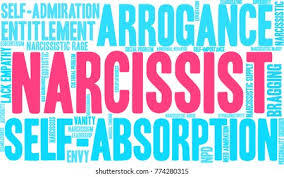 What is toxic narcissism?
What is toxic narcissism?What is toxic narcissism? It’s an extreme form of self-involvement that can cause a good deal of harm to others. Narcissists are highly self-centered individuals but they aren’t necessarily hurtful. You might know several narcissists in your personal and professional life. These are the people who make everything about themselves and who can be, to a greater or lesser degree, insensitive toward others.
Narcissists are everywhere. They’re our parents, our teachers, our spouses, our neighbours and our politicians. They’re our doctors, our lawyers and our friends. Most of them can be a bit annoying in the way they’re so oblivious to our needs and feelings and so preoccupied with their own, but very few of them are likely to be toxic. The difference between a regular narcissist and a toxic one is that the latter can be extremely destructive.
The toxic narcissist combines the self-centeredness and cluelessness of the ordinary narcissist with a degree of hostility and over-entitlement that enables them to justify any amount of horrible behavior on their part. Which brings me to Queen Victoria.
In observing her behavior over the past few weeks, I’ve made note of several things that she has said and done that suggest she might be a toxic narcissist. I’m going to list a number of traits that pertain to toxic narcissism, and I’ll give examples of some of Victoria’s behavior that seem to correspond with these traits.
The 12 traits of a toxic narcissist:1. Feeling special and superior in the absence of any evidence to support this: It was clear from the start that Queen Victoria felt better than all the other women. On the night when she was finally sent home, she vented to the producers saying that, “there’s no one in here he can marry besides me… I’m… the best option for him, and… I’m the only one with a working brain in this room, and I’m not even being rude. I’m being serious.”
2. Feeling entitled to special treatment: Victoria always felt that she should get a pass for her hurtful comments and that Matt had to give her more understanding and reassurance than he gave to the others.
3. Extreme defensiveness when challenged: When she was confronted about her aggressive put-downs toward others, she refused to acknowledge her behavior and threw it back in the other girls’ faces.
4. Feeling attacked when someone points out her bad behaviours: When Katie asked her to stop saying nasty things about the other girls she said that Katie owed her an apology for being hurtful to her. Like a typical toxic narcissist, she felt like a victim when asked to stop victimizing others.
5. Feeling completely entitled to their bad behavior: When Katie told her that talking smack about the others was not okay, she said that she was just expressing herself, that she had a right to do so, and that she had no intention of stopping.
6. Excessively jealous and competitive: When Catalina came in wearing the crown she had legitimately won as a pageant queen, Victoria – who also fancied herself a queen – snatched the crown right off Catalina’s head and put it on her own. Catalina stood there in stunned silence, astounded by Victoria’s rudeness.
7. Minimizing and rationalizing their bad behavior: When Victoria was apologizing to Catalina for having stolen her crown, she said that she was “just being playful,” and during the rose ceremony later that evening, she said that “I’m not malicious. I have a good heart,” despite having said some very malicious things about the other contestants while on the show.
8. Assuming that everyone sees them the way they see themselves — as delightful and charming: When she was sent home, Victoria said, “I would be very surprised if the girls are… OK that I left. The whole house is gonna feel like s*** that I’m gone… I brought so many people joy.”
9. Extreme insensitivity and callousness toward others – no empathy or remorse: When others pointed out that she was being hurtful, it didn’t move Victoria in the least. She didn’t seem to care who she hurt, as long as she got what she wanted.
10. Engaging in projection: During her last rose ceremony she asked, “Does Matt really want a wife that’s constantly creating drama? Or does he want a wife like me?” The irony is that Victoria was the one creating the majority of the drama on the show and the only “drama” Katie was creating was in trying to get Victoria, and some of the others, to stop being so abusive.
11. Unable to take any responsibility for their actions: Nothing anyone could say or do could get Victoria to own up to any of her bad behavior or to sincerely apologize for it. Her apology to Catalina only happened after Matt had confronted the group about bullying, and later, Catalina said that she didn’t see Victoria’s apology as sincere.
12. Rage and contempt when rejected: After she was not given a rose, she said to Matt that “I honestly feel so sorry for you that you would listen to hearsay and not all of the facts behind a situation. So goodbye,” and this was after they’d had a conversation in which she could have explained her actions to him. She also said to the producers after she was eliminated that, Matt was “not my king, and I am still a queen. Matt is a jester. The fact that, like, he chose Katie over me, ugh. Yeah, Matt, I feel sorry for you with your choices.”
Again, I’m not in a position to diagnose Victoria but if you consider the 12 traits of a toxic narcissist, Victoria seems to demonstrate every single one. Take a look at the list and decide for yourself.
__
Sign up for my free biweekly wellness newsletter here for my series on Moving into Winter with Good Self-Care, where you’ll learn simple tips for taking the best care of yourself and your loved ones this winter season.
And tune in to my ongoing YouTube video series on Coping With Covid.
January 31, 2021
How Covid Created Possibilities for Those Who Embraced Them
Covid-19 has been devastating for many. Whether from the loss of health, of loved ones, of jobs and businesses, of homes, or of finances, people have been suffering tremendously. We can’t underestimate the toll the pandemic has taken on our emotional and physical wellbeing. Still, in some ways, there’s a silver lining to the pandemic. It’s nothing I could have expected, but a year into lockdown, it’s something that I’m appreciating very much.
For some people, the isolation, all the free time, and the vast amount of quiet have created remarkable opportunities for growth, learning and creativity. We’re getting a whole lot accomplished and we’re feeling more fulfilled than ever.
Many of us, when confronted with an almost total lack of social and recreational activities, have been forced to rethink our leisure time. Many people redecorated their homes, taken the opportunity to do a purge of many years of accumulated clutter, or they’ve taught themselves new skills, like playing an instrument, baking bread or specialized cooking.
I went online and learned how to make my favorite Indian dishes that I used to order from the neighbourhood delivery place. Interestingly, I’m enjoying my own Aloo Gobi and Sag Paneer even more than the restaurant versions, because I’ve tailored the dishes to my own personal taste.
Many people have been catching up with their reading during the pandemic. I’ve read the entire oeuvre of Louise Penney and now I’m working through that of Donna Leon, with some more serious literary novels mixed in-between. It’s been a pleasure, getting to read so much and on such a regular basis.
The opportunity for creativity:A lot of people have had uninterrupted time to focus on their creativity. I started a writing class about a month before the first lockdown, and very quickly, the class switched to online. Since then, I’ve done two more terms of writing class plus a private mentorship, and so far I’ve finished a working draft of book one of my YA dystopian trilogy, and I’m two hundred pages into book two.
One of my struggles with writing had always been the challenge of spending so much time alone with my manuscript while everyone else was off, having a good time. There’s been no FOMO to trouble me these days, as there is literally, nothing to miss out on.
Also, compared to all the suffering going on around me, any petty fears or blocks I may have had around my writing have been rendered absurd during the pandemic. The result is that I’m now able to just do the work.
The pandemic has helped many of us reorder our priorities. Several people I know have retired or changed careers. People have been re-thinking their lives and opting to do what they’ve been dreaming of sooner, rather than later.
With so much death in the air, we’re much less willing to waste our time doing things that don’t bring us joy and fulfillment. These days, many of us are much less interested in the superficial and much more interested in the meaningful, and that’s got to be a good thing.
More meaningful relationships:Many people have been forming deeper commitments to their romantic partners, and many have finally walked away from unhappy relationships. Again, the particular circumstances of the pandemic are helping them to acknowledge what they want and what they don’t want.
I’m hearing a lot of people saying that the pandemic has also helped to clarify who their real friends are, because when there are no activities to distract them and the relationships are now simply about talking to one-another, it doesn’t take much to see who has been spending time with us because it’s been convenient or amusing, and who has been doing so because they actually care about us.
The silver lining of Covid-19 is that the social isolation, the lack of distractions and the increased time on our hands is providing many of us with opportunities to learn things we couldn’t have learned without it.
We’ve had an opportunity to clarify our priorities and to clear out a lot of emotional, physical and even human clutter. I’ve realized that there are some activities I won’t be returning to, once things are back to “normal,” because they now feel like a waste of my time.
A lot of people have been bored during the pandemic, because they’re busy missing the things they used to do, rather than imagining new things that they’d like to do.
Being flexible and adaptable has been an essential survival skill during the pandemic and for those who’ve been able to go with the flow, we’ve taken up new habits and new activities that are likely to last us a lifetime.
I started walking in the summer and it’s become an almost daily habit. Each day, after my hour-long walk I return home in a terrific mood. I’ve always hated the snow and the cold, and yet, this winter I’ve gone out walking, even when the snow was falling horizontally.
Focusing on what really matters:For me, one silver lining of the pandemic is that with all the death around us, I’ve become a lot more focused on my own mortality, but not in a morbid way. Rather, I’ve been clarifying what I want to accomplish with whatever amount of time I’ve got left in my life.
I realized that more than anything, I want to write fiction, and I’m going to make that my priority in the coming months and years.I’m sad for the people who have lost so much during the pandemic. I do my part by seeing my patients for psychotherapy and doing psychiatric assessments, online, and I admire all the people who spend their days serving the community in their own way.
Even as I grieve the losses we’ve all experienced, I celebrate the opportunity that the lockdown has brought to me and to so many others. Even during the pandemic, resilience still means making lemonade out of the lemons we were given. For me, and for many of the people that I know, the lemonade has been pretty delicious.
__
Sign up for my free biweekly wellness newsletter here for my series on Moving into Winter with Good Self-Care, where you’ll learn simple tips for taking the best care of yourself and your loved ones this winter season.
And tune in to my ongoing YouTube video series on Coping With Covid.
Marcia Sirota's Blog
- Marcia Sirota's profile
- 1 follower








